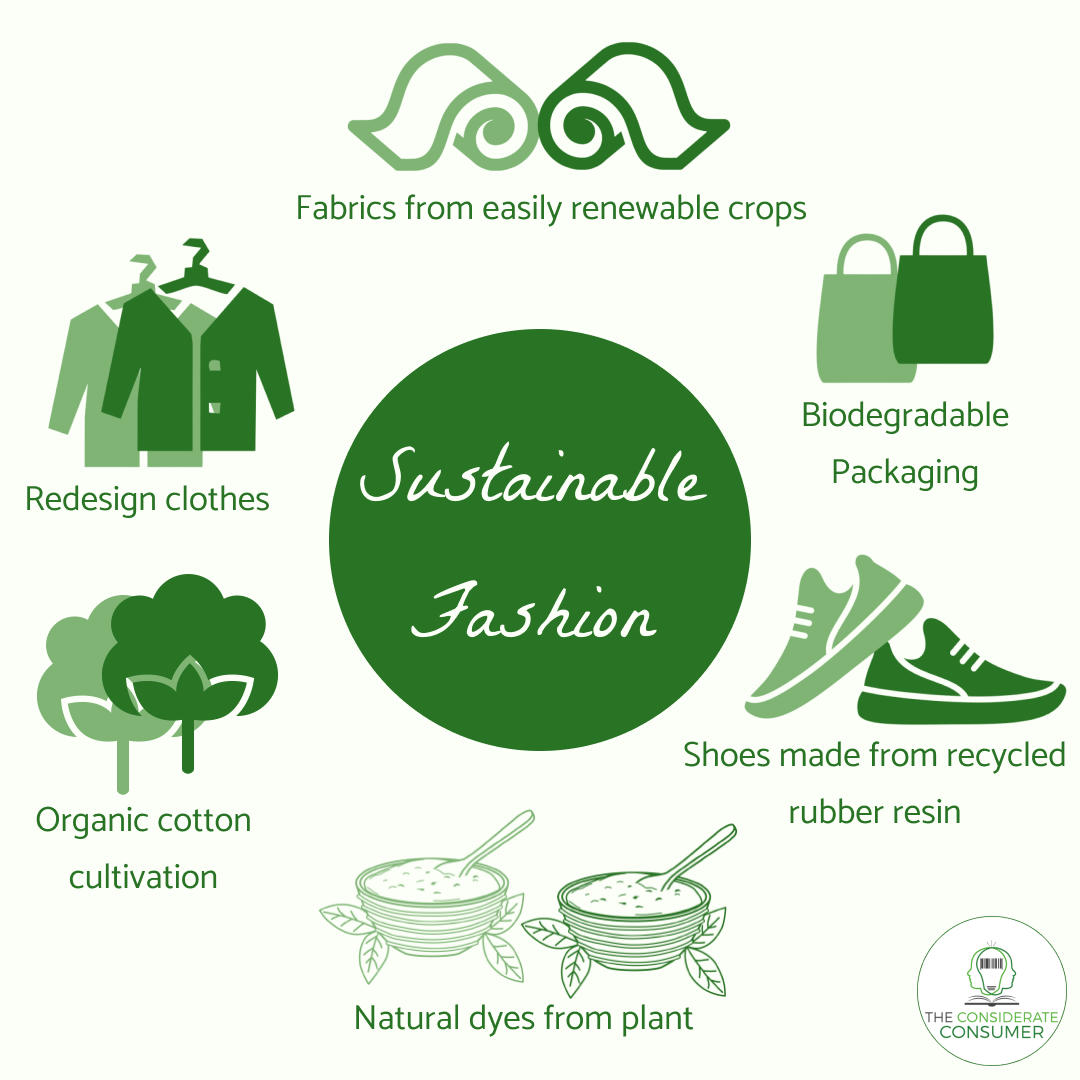Cape Town Sustainable Fashion: Eco-Friendly Trends to See
Cape Town Sustainable Fashion: Eco-Friendly Trends to See
Blog Article
Stay Ahead of the Contour by Discovering Cutting-edge Fashion Fads
In a market as vibrant as fashion, remaining in advance includes more than simply complying with present fads-- it requires an exploration of advancement. The convergence of technology and style advertises a brand-new era of consumer interaction.

Welcoming Smart Textiles
Recently, the garment industry has experienced a transformative shift with the assimilation of clever fabrics, an advanced technology that mixes modern technology with fabric. This evolution stands for not just a fusion of looks and functionality however likewise a considerable jump in the direction of sustainability and customization in vogue. Smart textiles, additionally understood as e-textiles, installed innovative electronic devices such as sensors and conductive strings within the fabric, making it possible for garments to communicate with the atmosphere or the user.
These textiles are created to keep an eye on physical criteria, such as heart rate or body temperature level, supplying real-time wellness analytics. Past wellness applications, smart textiles are likewise being used for adaptive clothes, which can transform color or pattern in feedback to environmental stimulations, thus providing a dynamic fashion experience.
Moreover, the advancement of energy-harvesting fabrics that produce power from movement or sunshine is leading the means for self-sufficient wearable modern technology. This development is interesting environmentally mindful customers and designers intending to lower the eco-friendly footprint of fashion. As study and advancement in this field development, clever textiles are anticipated to end up being increasingly prevalent, improving the landscape of contemporary fashion with their multifunctional capabilities.
The Surge of 3D Printing
Transforming the production landscape, 3D printing has become a game-changer in the garment industry. This cutting-edge modern technology has enabled designers to press the boundaries of creativity, generating intricate and customized garments that were formerly inconceivable. By leveraging electronic layout and additive production, 3D printing helps with the production of intricate geometries and patterns, permitting designers to explore brand-new structures and frameworks.
A notable benefit of 3D printing in fashion is its capacity to produce on-demand, lessening waste and reducing supply needs. This performance not just maximizes production procedures yet also enables quick prototyping, allowing designers to bring their visions to life in a shorter duration. Furthermore, 3D printing sustains modification somewhat unmatched by conventional methods, providing one-of-a-kind layouts and tailored fits customized to individual customer preferences.
The surge of 3D printing has likewise democratized fashion, making it obtainable to emerging designers who can now produce top notch pieces without substantial monetary investment in standard production facilities. As modern technology remains to breakthrough, the garment industry is poised to harness the full potential of 3D printing, exploring brand-new products and techniques that will undoubtedly redefine just how fashion is conceived and generated.
Lasting Style Advancements
As the style sector faces the pushing requirement for environmental obligation, sustainable style innovations have emerged at the center of transformative modification. The expanding recognition of ecological effect has fueled a shift in the direction of more eco-conscious techniques and products. Brands and developers are now focusing on sustainability, incorporating techniques that minimize waste and lower carbon footprints.
One substantial development is the surge of round fashion, which emphasizes recycling and upcycling to prolong the lifecycle of garments. This technique not just minimizes waste but likewise encourages customers to embrace a much more conscious approach to clothes consumption. Furthermore, the use of sustainable materials, such as organic cotton, hemp, and recycled polyester, has actually gained traction. These materials call for much less water and power during production, substantially decreasing environmental influence.
An additional innovation exists in the fostering of innovative dyeing techniques that use natural dyes or waterless processes, thus minimizing the large amounts of water and chemicals traditionally utilized in textile dyeing. Additionally, advancements in biotechnology have caused the production of lab-grown natural leather and materials, offering cruelty-free and eco-friendly alternatives to traditional products. With these pioneering initiatives, the apparel industry is making significant strides towards a more lasting future.

Tech-Integrated Garments
Tech-integrated apparel stands for a groundbreaking fusion of style and modern technology, improving exactly how people communicate with their garments. This ingenious domain is noted by the inclusion of wise fabrics and embedded electronic elements, boosting both functionality and visual allure. From health and fitness trackers embedded in sports apparel to warmed jackets controlled by means of smartphone applications, tech-integrated garments supplies customers unprecedented ease and flexibility.
Introducing brands are driving this pattern, concentrating on developing garments that reply to ecological stimulations or user commands. For circumstances, some garments can alter color or pattern in response to temperature changes, while others include biometric sensors to monitor wellness metrics like heart price weblink or anxiety levels. The smooth assimilation of modern technology into textiles likewise prolongs to environmental sustainability, with initiatives to develop self-cleaning fabrics or garments that change to climate condition, therefore minimizing the requirement for several layers.
Moreover, the advent of wearable innovation is not just limited to apparel however includes devices like watches and eyewear, further widening the range of tech-integrated fashion. As the sector remains to innovate, the capacity for modification and customization in garments expands, supplying consumers special, tech-enhanced style experiences that satisfy their private requirements and preferences.
Future of Virtual Style
In recent times, the future of online fashion has become a transformative force within the market, leveraging advancements in electronic technology to redefine just how fashion is developed, experienced, and taken in. By integrating enhanced fact (AR), virtual truth (VIRTUAL REALITY), and 3D design tools, developers can currently craft interactive and immersive experiences that transcend standard style borders. Virtual fashion enables the creation of garments that exist exclusively in digital atmospheres, supplying unlimited opportunities for technology without the limitations of physical manufacturing.
This digital change not just presents chances for innovative expression however likewise addresses sustainability worries intrinsic in traditional fashion methods. Cape Town Sustainable Fashion. By getting rid of the demand for physical sources, online fashion minimizes waste and lessens carbon impacts. Additionally, the increase of online style lines up with the raising consumer demand for tailored and one-of-a-kind experiences, as virtual garments can be personalized and tailored to private preferences with convenience

Conclusion
The apparel industry's future depend on the assimilation of innovative innovations and sustainable methods - Cape Town Sustainable Fashion. Smart textiles and tech-integrated clothing are improving functionality, while 3D printing offers opportunities for modification and waste decrease. Lasting style, through circular strategies and environment-friendly materials, shows a dedication to ecological stewardship. Additionally, virtual style is poised to redefine consumer communications. Adapting to these patterns is important for brand names seeking to remain appropriate and affordable in this swiftly advancing landscape.
In recent years, the style market has actually witnessed a transformative change with the combination of clever textiles, a sophisticated innovation that mixes innovation with material.As the fashion industry grapples with the pressing need for ecological obligation, lasting style technologies have emerged at the leading edge of transformative modification.In current years, the future of online style has emerged as a transformative pressure within the industry, leveraging advancements in digital modern technology to redefine exactly how fashion is created, experienced, and consumed. The surge of virtual style aligns with why not find out more the boosting customer demand for distinct and individualized experiences, as digital garments can be customized and tailored to individual choices a fantastic read with convenience.
The fashion sector's future lies in the assimilation of sustainable techniques and cutting-edge innovations.
Report this page